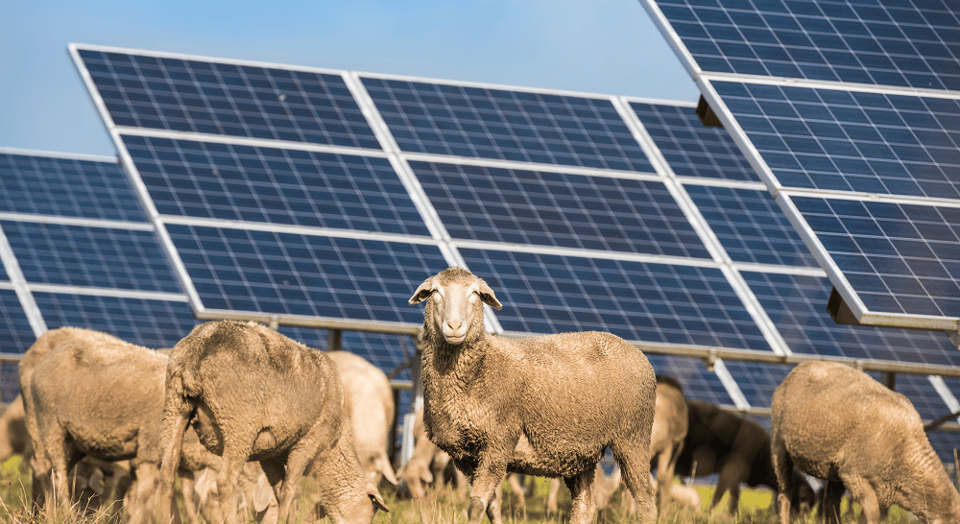Convergent Biodiversity and Environmental Management Best Practices for Energy Storage

Why Biodiversity Matters to Convergent
The escalating climate crisis has put increasing pressure on the clean energy transition. While we know that energy storage is the linchpin of that transition, we also know that development can impact local environments.
At Convergent Energy + Power, our commitment to biodiversity and environmental management is central to how we think about our business—and our industry. And, it is part of our larger commitment to ESG.
ESG, which stands for “Environmental,” “Social,” and “Governance,” is baked into our mission, our vision, our hiring process, our company culture, and our operations. In 2022, Convergent received a “low risk” rating and ranked among the top five lowest risk companies within Sustainalytics’ renewable production subindustry.
Read more about Convergent’s 2022 ESG Risk Rating.
There are many factors that determine a company’s risk rating within the ESG framework. In honor of Earth Day, we want to take an opportunity to share how we are approaching land use and biodiversity.
Convergent’s Vision and Commitment to Biodiversity and Environmental Management
Convergent is committed to being a responsible environmental steward, especially when it comes to land use. That is why we use the mitigation hierarchy and conservation hierarchy as guidelines for our projects to work towards a net positive impact framework. Our goal is to minimize the potential for a negative impact on critical habitats and strive to restore, and in some cases even improve the land, after a project has been decommissioned.
We are aware that our projects may have the potential to negatively impact the local environment which is why we take proactive measures during our siting and development phases of a project. Our projects aim to have a net positive impact on biodiversity through nature-based solutions, proactive risk assessments, and robust decommissioning plans that specifically address biodiversity. Convergent recognizes the importance of biodiversity across ecosystems and remains committed to promoting healthy levels of biodiversity in regions both affected and unaffected by our projects.
How we Approach Biodiversity and Environmental Management
Avoid
Before we begin a project, Convergent evaluates each site for climate, biodiversity, and land integrity risks. We analyze the proposed site for critical habitat—areas of high biodiversity value such as wetlands, marshlands, and threatened ecosystems. We refer to maps of Critical Biodiversity Areas and work with local regulatory codes to ensure our projects will not put local ecosystems and communities at undue risk. We also ensure that our sites will not pose new threats to engendered species.
Our priority is to avoid critical habitats and we believe that some areas are too sensitive to enter. We are committed to avoiding development on World Heritage Sites and are sensitive to the land rights of Indigenous Nations. Before we begin construction, we work with the local community and provide a period for feedback and insights.
Minimize
The reality is that no development is spared from negative impacts on the local environment. To minimize our impact during the development and operation of our projects, Convergent will leverage integrated nature-based solutions that both support the local economy and aim to increase biodiversity. To minimize the impact of our projects we take proactive measures. We are especially aware of how solar panels and cleared ground absorb and retain heat, increasing local temperatures through a “photovoltaic heat island” effect.
One example of how we are planning to combat this is through the adoption of agrivoltaics. Convergent has conducted extensive research on the value of agrivoltaics to alleviate the strain that increased heat could place on local flora and fauna. In 2022, Convergent has targeted seven sites to pilot. For eligible sites, Convergent is rolling out a three-part agrivoltaics plan to promote biodiversity on-site, reduce maintenance emissions, reduce photovoltaic heat island effect, decrease erosion and site runoff into local watersheds, and foster mutually beneficial relationships with local stakeholders and economies.
“I’m excited about Convergent’s newest initiative to implement agrivoltaics within our projects through the use of sheep grazing and bee habitat,” said Becky Koze, Senior Vice President, Development at Convergent. “On one of our projects in Maryland, we’re currently subleasing the portion of the site we didn’t use for development of our solar plus storage project to a local farmer. These initiatives are a great example of the use of mitigation and conservation hierarchy as well as biodiversity.”
More on this exciting pilot to come!
Restore
Our projects are designed to have minimal impact on the land and decommissioning involves seeding all our sites with a seed mix involving native grasses once equipment has been removed. We are intentional when it comes to avoiding the potential introduction of invasive species to an ecosystem. In addition, we’ve worked on multiple land-use projects where we started with a brownfield and left the site improved. Our goal is to enhance local environments when we can do so through diverse planting efforts that will reduce post-project runoff and blend the site back into the local ecosystem.
At the time of decommissioning, the installed equipment will be removed, repurposed, disposed of, and recycled where possible. The facility will be restored to a state similar to its preconstruction condition. The removal of equipment and material will be done in accordance with the applicable regulations and manufacturer recommendations. All necessary permits will be acquired and any authorities having jurisdiction will be notified. Before decommissioning, the facility will be de-energized and disconnected from the grid in coordination with all applicable parties. Generally, the decommissioning of the facility proceeds in reverse order of the original installation.
Offset
Convergent takes measures to offset the impact of our projects both at the site level and globally. In 2021, Convergent donated the funds we would typically spend on end-of-year gifts for partners and stakeholders to the National Forest Foundation. Our gift enabled the planting of 5,000 trees. Deforestation is one of the most pressing challenges to climate change mitigation, and we are committed to supporting a sustainable and diverse future.
How Can Energy Storage Help Your Organization?
If you’re looking for an energy storage partner with a committed to the clean energy transition and responsible development, look no further!
Convergent has over a decade of expertise financing, owning, and operating energy storage or solar-plus-storage systems for businesses and utilities to lower energy costs, increase sustainability performance, and improve power reliability.
As renewable energy (an intermittent resource) becomes an even greater part of our electric grid, energy storage becomes increasingly necessary.
If you’re ready to supercharge your position in the clean energy transition and benefit from an energy storage or solar-plus-storage system, please contact us today to learn more.

Ivy Gilbert is a Senior Marketing Associate at Convergent Energy + Power. In addition to supporting Convergent’s strategic marketing and communication, Ivy brings field expertise in ecology, earth sciences, and environmental education to the company. Ivy participated in Dickinson College’s Arctic field research in 2016, studying the impact of climate change on ocean currents and biodiversity.





